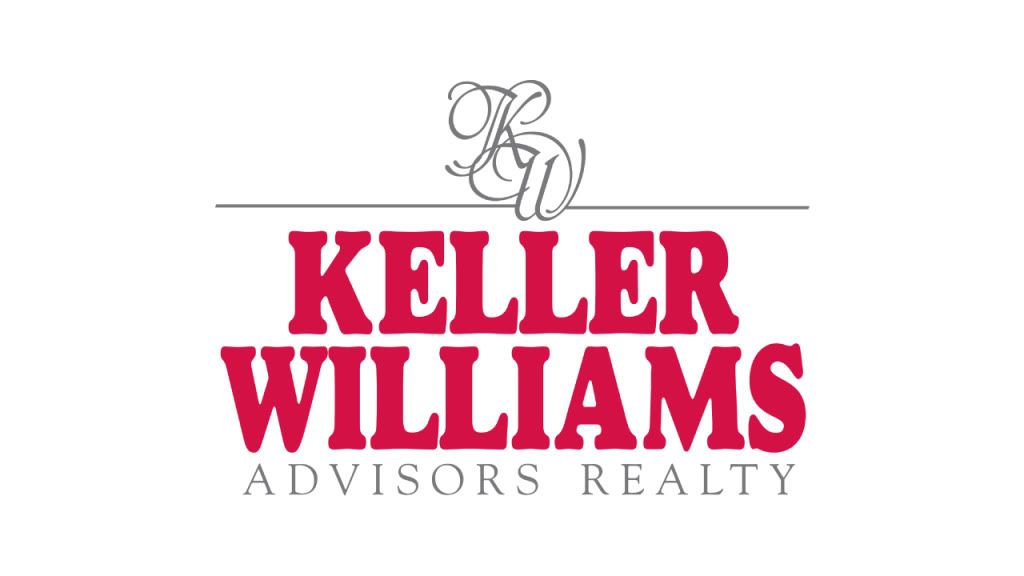Wednesday, August 29, 2012
Understanding the Difference Between Online Resources and a Realtor When Pricing Your Home
Watch on your mobile device >>
The Internet can be a great resource for a host of things centered on buying or selling your home but in some cases, the most you can expect to gain is a basic understanding of things. For something as serious and important as pricing your home to either value it or sell it, relying on the Internet can only go so far. Here we’ve outlined some key differences between the figures you will yield from online sources versus those that have been compiled by your local Realtor.
ACCURACY IS VITAL
In today’s market especially, accurately pricing your home to sell is essential. With it being a buyers’ market, you will have to gain a solid understanding of allfactors that contribute toward your property’s value. There can be negative repercussions of pricing a home either too low or too high. One such scenario is if there was a seasoned buyer who had taken the time to research in advance of searching for homes. That buyer’s knowing what to expect in the local market seeing your overpriced home could result in a turn-off and you could lose the sale. By the same token, you stand to get the shorter end of the stick in case of not knowing what you could have charged. Spending a little more time and/or expense can make a huge difference in the end outcome.
ONLINE TOOLS AND CALCULATORS
There are more than several websites where anyone can log on, put in their zip code and be given an instant “analysis” of their real estate value. The figures that appear as results from searches made through online resources stem from a conglomeration of several weeks and sometimes months of data collected from a particular region.
Websites such as www.zillow.com,www.realtytrac.com or www.trulia.comoffer a great way to get a generic idea of the value that homes in your region are going for or have gone for recently. As an added resource to other services also offered on these sites, the goal is not to assist homeowners in assigning a selling price on their property based on the data, rather to offer a snapshot on sales and pricing data for the area. In fact, for many people it is the perfect tool to add an extra edge when determining the fair market value of your home, along with other factors.
PROFESSIONAL COMPARABLE MARKET ANALYSIS
While online real estate tools are a great way to get a preliminary idea, they are only going to yield a figure that will show you where to start. To get an accurate assessment, you will need to avail the professional services of a Realtor. The only way to get an accurate “reading” of what the market rates are for homes in your vicinity and your neighborhood in particular, is to have a comparative market analysis conducted by a Realtor who understands your neighborhood. There is a good chance that they have dealt with properties in the area on a first-hand basis, regularly interact with the agencies and organizations that deal with very homes in your neighborhood and are familiar with the people in various facets that you will end up needing to interact with yourself, as the seller of your home.
Realtors conduct a detailed Comparable Market Analysis (sometimes also called Competitive Market Analysis) through a series of data compilation of area homes and properties, considering factors such as amount of land, the square footage and number of bedrooms or typical amenities in the neighborhood. But homeowners can also opt to delve into accurate detail about their property’s value by relying on an independent appraiser. Also, through the use of CMA data the County Tax Assessor determines the value of your property taxes.
~
When you are pricing your home to sell, it is vital that you use all available resources. At first, it makes sense to “shop around” and get to know the generalities before you head for the specifics. And as with most transactions dealing with your real estate world, it is always best to rely on your Realtor for quality, effective and accurate information that is relevant to you and YOUR market.
Tuesday, August 14, 2012
Cincinnati FHA203K Loan
Watch on my mobile device >>
Using an FHA 203k loan can help you get the home you want - especially if you are looking at building some fast equity in a 'fixer upper'. Looking for a home that's almost perfect? Check out this loan to get funding for the house and any repairs that is bundled together, and a 203k loan may be easier to get than other home improvement loans. First, I'd like to share an example of how this works. We are closing on a home for a client shortly who is purchasing property for 120,000 dollars. After escrowing approximately 10,500 dollars for cosmetic and deck repairs, their "subject to" appraisal came back at 195,000 dollars! That's 64,000 dollars in equity the minute the Deed is recorded! What an awesome program! You can kill two birds with one loan.
203k Loan Bundling
Using a 203k loan allows you to combine loans for purchase (or refinance) and home improvement. This can reduce closing costs and paperwork; multiple loans mean more closing costs, and temporary loans may have higher interest rates than your 203k loan. You kill two birds with one loan.
Keep in mind that 203k loans require a little more paperwork than some other loans because you have to manage and document improvement projects.
Handle Deal Breakers
You may want to buy a home that's almost perfect. However, serious defects may scare lenders off. If sellers won't fix the problem, you can't buy the house unless you use something like a 203k loan. The lender knows you'll fix serious problems that you've agreed to fix, and they can move forward on the deal.
Temporary Housing
203k loans allow you to set money aside for housing while your repairs are completed. You can continue to pay an existing mortgage, or pay rent for up to six months. You won't have to live with an on-going construction project or come up with two housing payments each month.
Large Loans
Using a 203k loan provides access to large loans. Yes, there are limits, but you can borrow enough to finance 110% of the home's projected value after improvement. 203k loans, like other FHA loans, have low down payment requirements (for better or worse). Because they're guaranteed, the interest rate is competitive.
The main benefit of 203k loans is the ability to make the improvements you want. Funding for an addition or updating the kitchen is taken care of up front. You can turn the home into something you want. If you're environmentally conscious, you can even choose green appliances and materials
There are many homes available that with a little TLC could be your dream home. A Cincinnati fixer-upper may also make a great investment, especially if you are able to do some of the labor yourself, or you are a savvy buyer. You are the person that has the vision to take that sad-looking little home on a great lot in a good location and turn it into the most desirable home on the list of Cincinnati homes for sale!
Ask your lender if they offer a 203k loan or contact Sarah Close Associates at Keller Williams and we will put you in touch with ours.
Wednesday, August 1, 2012
Deed Restrictions (10 Things That Can Ruin Your House)
Watch on your mobile device >>
It is imperative, if you are looking to build or remodel a home, that you are aware of any deed restrictions. A deed restriction is a provision in a deed that limits what can be built on a property, or how a property can be used. So if you want to assure that your dream home will not turn into a nightmare, here are common deed restrictions that any property owner should be aware of.
Obstructing a Neighbor’s View
Many deeds have agreements in them that state that the neighboring properties views must be the same as when the agreement was reached, which may have been decades ago. Though extremely popular in resort towns where views of mountains or the beach are highly valued, these restrictions are also in place in many communities with more subtle views.
Type and Number of Vehicles
In order to keep neighborhood streets from appearing cluttered, some properties may have restrictions on the number of cars each house may keep in the driveway and parked on the street. If there are multiple members of your household that are driving age and have a vehicle, make sure you are aware of any restrictions that may prohibit some of these vehicles from being parked in the driveway or street.
Building Fences
The size and style of fence which may be built on a property are often specified in a deed. The most common of those outlawed by deeds around the country include chain-link fences or very tall privacy fences.
Removing Trees
This restriction is becoming much more commonplace in many neighborhoods which wish to maintain an environmentally conscious atmosphere or preserve tree-lined avenues. There may be a complete ban on tree removal or a certain percentage of trees on a property may be protected, so before you start up your chainsaw, brush up on your properties stipulations regarding the removal of trees.
Approving Plans
In an attempt to keep a neighborhood’s identity uniform, many HOAs (Home Owners’ Associations) will need to approve your building plans before construction begins. So, if you are hoping to build a modern home in a neighborhood full of Victorian-style homes, contact the HOA beforehand to get the go-ahead or you may face an injunction that forces you to alter your building plans to conform to the neighboring houses.
Adjacent Structures
One of the most heavily controlled deed restrictions consists of the building of any adjacent structures on a property, whether it be a shed or pool house. If the building of such a structure is not forbidden outright, odds are that the type, size, and location of the structure on the property are limited due to a deed restriction.
No Business Here
Perhaps the most easily adapted deed restriction consists of prohibiting the running of a commercial enterprise out of a residential abode. The reasons behind such deed restrictions include limiting the number of traffic in the neighborhood consisting of customers and deliveries. However, recently judges have been finding that these covenants are unlawful restrictions to private rights.
Color Palettes
Lists of approved, or occasionally unapproved, colors which a house can be painted are often provided by home-owner association. So if you are building a new house or giving your current house an exterior make-over, be sure that the color you choose for your home falls within the permitted color spectrum.
Pet Restrictions
If you have a furry loved one in your family or if wish to keep any sort of livestock on your property for organic food purposes (such as chickens or goats), check with your neighborhood covenant to assure that these animals will be allowed on your property. Though restrictions on livestock may not surprise a home owner, there may also be restrictions against certain breeds of dogs, pot-bellied pigs, or the number of animals you may have in the house.
Number of Bedrooms
Deed restrictions are in place to limit the amount of septic use of a household due to the idea that the number of bedrooms in a home correlates to the number of bathrooms. If you are not able to fit your entire family comfortably into your dream house, then this would be a major setback, to say the least.
Instead of fighting deed restrictions, facing heavy fines, or being forced to alter your after new building or modifications have occurred, a home owner is much better of knowing any limitations set in place due to deed restrictions before buying the property. Arm yourself with the knowledge of any HOA covenant regulations or deed restrictions before purchasing or remodeling a home, and it will make the transition into the house you’ve always wanted much smoother.
Subscribe to:
Comments (Atom)









